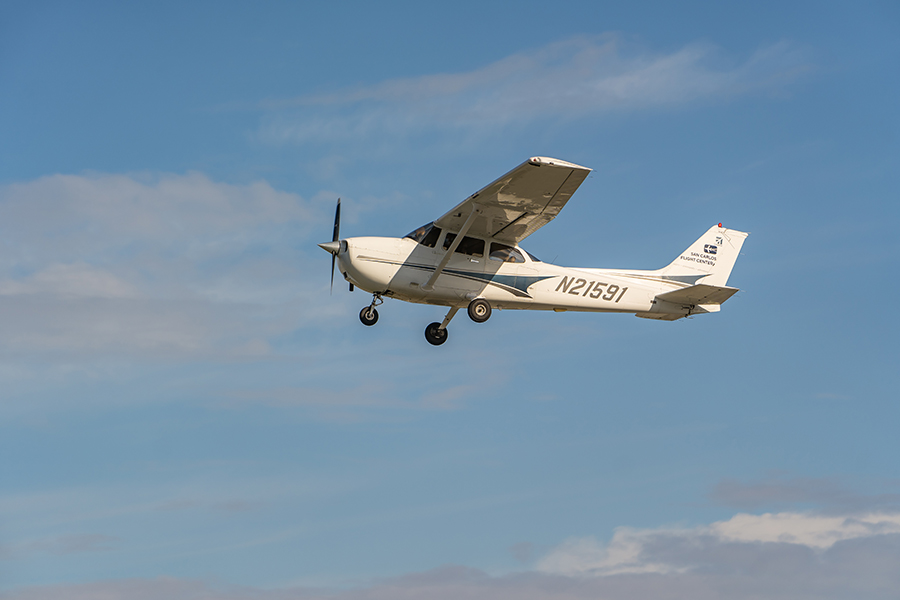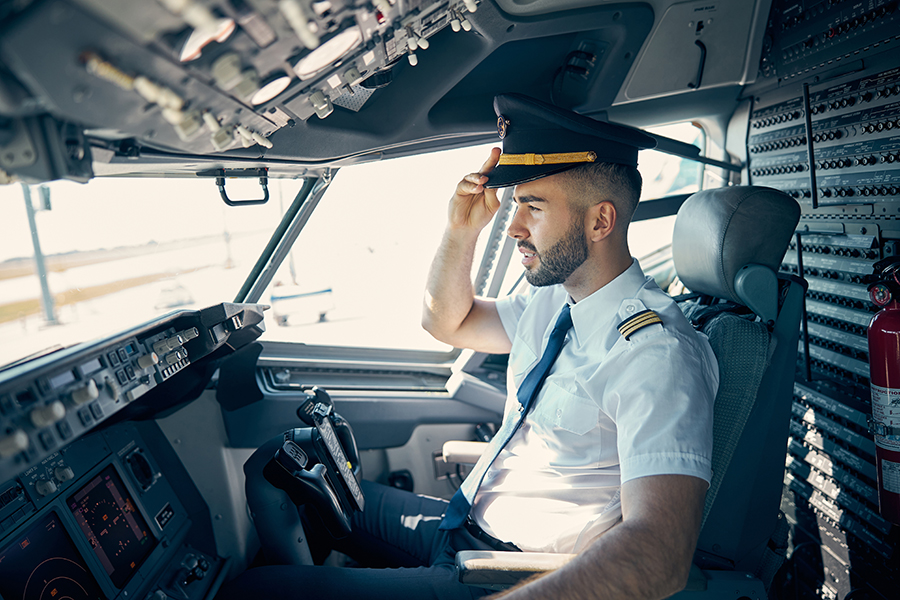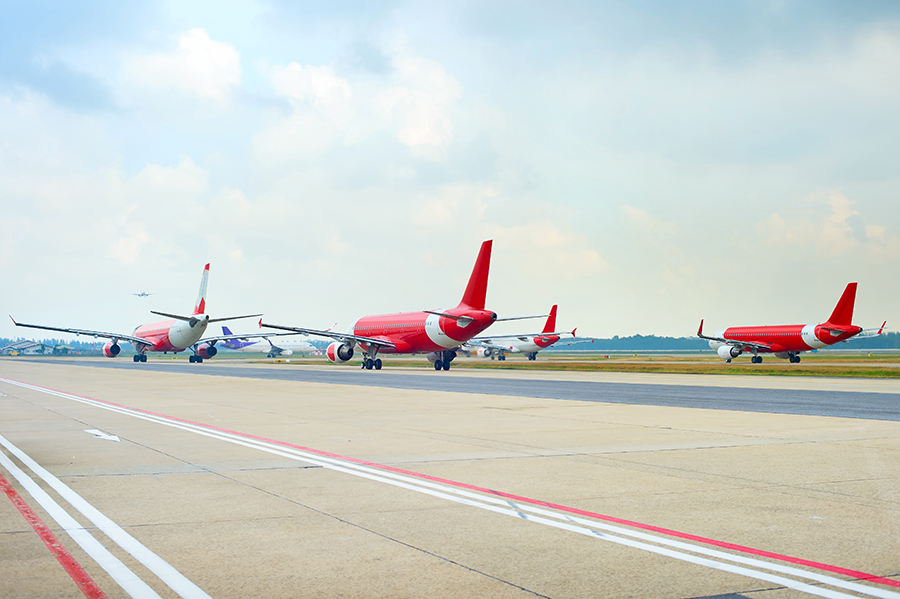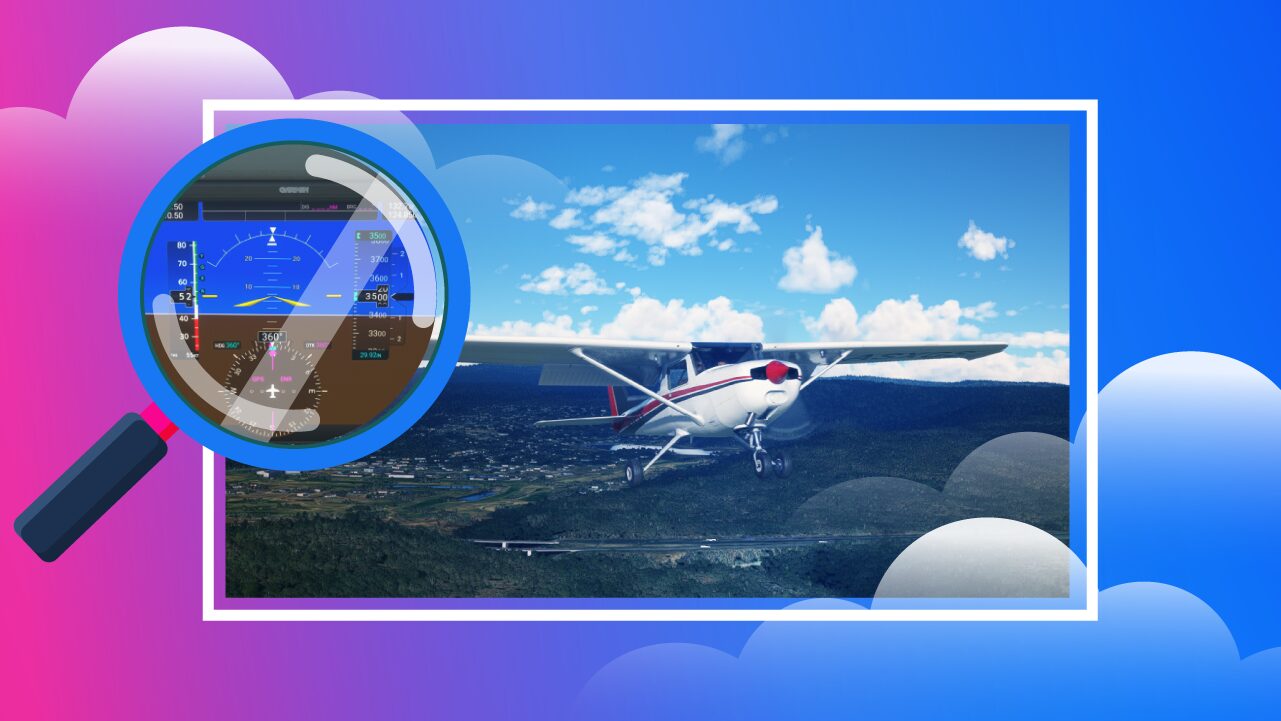-
What are Turns Around a Point?
-
How to Fly Turns Around a Point
- Step 1 – Select a Ground Reference
- Step 2 – Position the Aircraft for Entry into the Maneuver
- Step 3 – Enter the Turn
- Step 4 – Change the Angle of Bank as You Turn
-
Common Mistakes
- Entering the Maneuver While Unstable
- Not Establishing Wind Direction and Speed
- Not Maintaining Altitude or Airspeed
- Using too Much Initial Bank
- Not Adjusting Bank Angle
-
Conclusion
Turns around a point, part of a family known as “Ground Reference Maneuvers,” might seem perplexing when first encountered during training. “We’re going to fly in a circle for an hour? Seems like a waste of money.”
What may seem like a redundant exercise quickly becomes a hand-eye coordination battle the first time you attempt the maneuver in anything other than calm winds, with your instructor disapprovingly shaking their head at your ForeFlight breadcrumbs.
To get you on the right path (pun intended), this article will dive into what the maneuver is and how to fly it.
Here are a few quick tips for flying turns around a point:
- Choose a good ground reference point.
- Ensure that your ground reference point is clearly visible.
- An ideal reference point is where two roads meet at 90 degrees.
- Ensure the aircraft is stable and trimmed before entering the maneuver.
- Double-check the wind speed and direction before positioning for the maneuver.
Maintain altitude during the turn, and constantly scan your instruments while checking the ground reference.
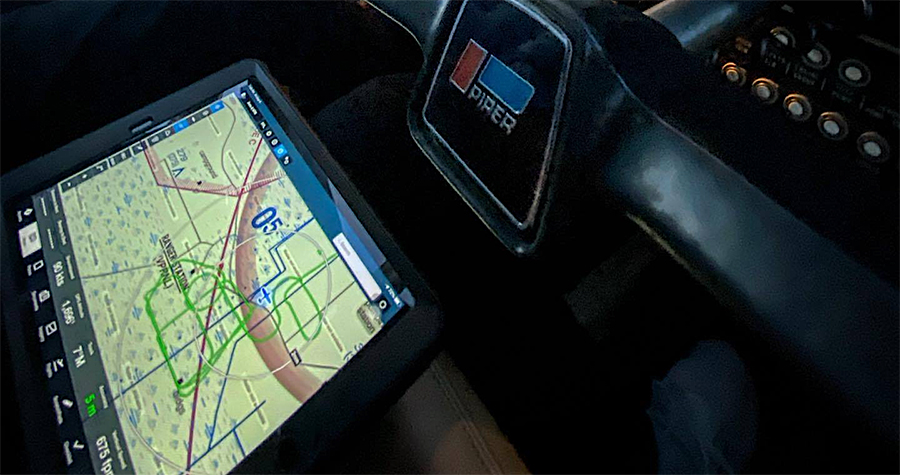
What are Turns Around a Point?
Turns around a point is a maneuver where the aircraft maintains a constant radius turn around a reference object on the ground.
The maneuver is intended to teach you how to compensate for wind when flying with reference to the ground (e.g., in a traffic pattern) and how to divide your attention between the instruments, ground, and flight path.
The first crucial aspect of the maneuver is that the aircraft must maintain a constant radius of turn with reference to the ground (i.e., track). If there was no wind, you would simply maintain a constant angle of bank and airspeed and fly a beautiful circle that would make your elementary school math teacher proud.
Introduce wind into the mix, and things become slightly more complicated.
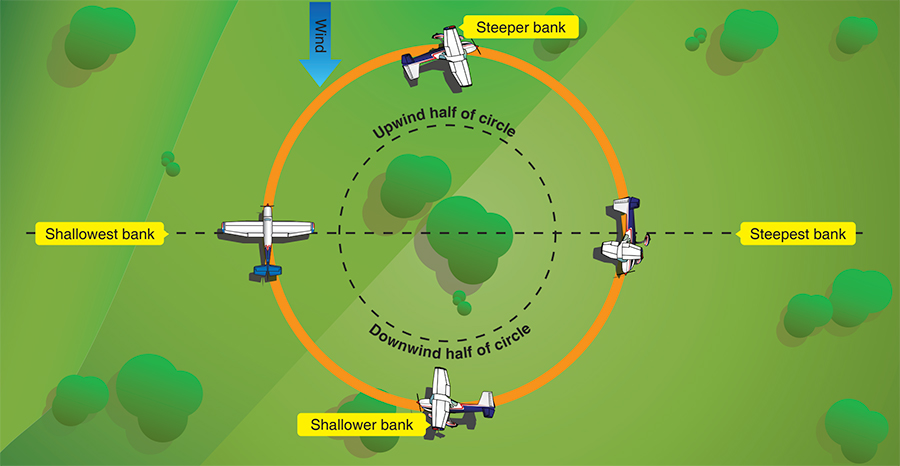
When a wind component is present, the bank angle must be adjusted accordingly during the turn, as the aircraft’s track will not be a constant radius circle.
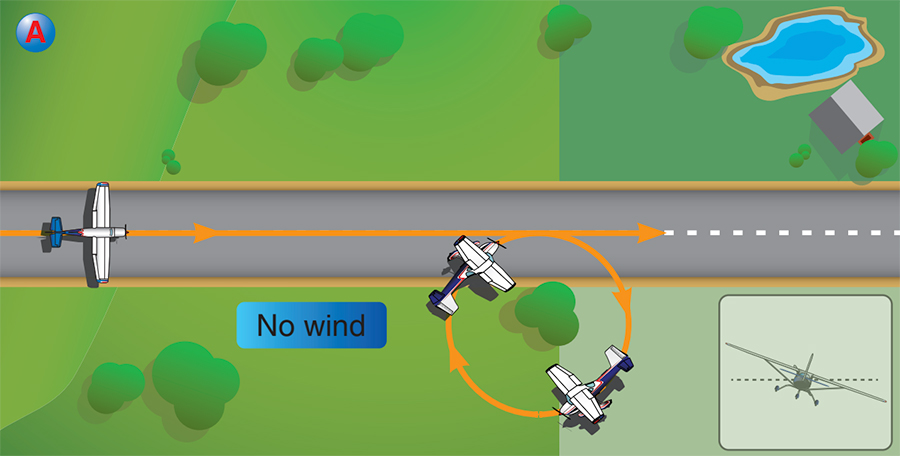
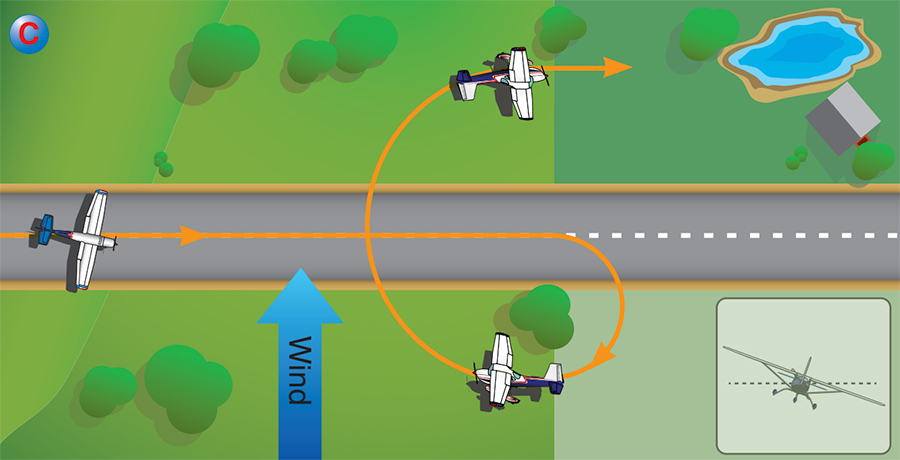
How to Fly Turns Around a Point
We have a class that shows you how to complete 35 different Private Pilot and Commercial Pilot Maneuvers. Learn more here.
The maneuver consists of two 360-degree constant radius turns around a point on the ground (known as the “ground reference”). The first 360-degree turn is generally used to determine the extent of correction required for the current wind condition, allowing for a more accurate second 360-degree turn.
Step 1 – Select a Ground Reference
The first step in a successful turn around a point is selecting an excellent ground reference.
Your ground reference should be easily distinguishable from its surroundings but small enough to be used as a reference.
A good ground reference is two roads meeting at a 90-degree angle. With straight roads, you can visually choose a reference point for each quadrant.

Step 2 – Position the Aircraft for Entry into the Maneuver
Position the aircraft on a downwind position relative to your ground reference. If you want to turn right, the ground reference should be on your right, and vice versa.
The distance from your ground reference will determine the radius of your turn. In other words, the further away from your ground reference you are, the greater the radius of turn will be and the shallower the maximum angle of bank required.
Step 3 – Enter the Turn
When you approach a position parallel to your ground reference, begin rolling into the turn. This position (downwind and parallel to the ground reference) will be the point where the greatest bank angle is required.
You should roll fast enough to reach the required (maximum) angle of the bank as you pass parallel to your ground reference.
Step 4 – Change the Angle of Bank as You Turn
As you enter the maneuver, gradually reduce your bank angle as you turn into the wind.
When you face into the wind (i.e., on the opposite side of the entry), your bank angle should be at its shallowest.
As you turn out of the wind, you will slowly increase the bank angle and return to your initial position at the maximum bank angle. If your bank angle exceeds 45 degrees, you are too close to your ground reference and need to adjust your turn accordingly.
Common Mistakes
Here are a few of the most common mistakes made when turning around a point.
Entering the Maneuver While Unstable
Before entering the maneuver, you must ensure that the aircraft is stable and correctly trimmed. If you enter the maneuver while not maintaining altitude or heading or you are incorrectly trimmed, you will have difficulty maintaining altitude and adjusting the bank angle.
Not Establishing Wind Direction and Speed
Before entering the maneuver, the aircraft must be positioned according to the wind direction. If you do not accurately assess the wind condition, the aircraft will be positioned incorrectly when entering the maneuver.
Not Maintaining Altitude or Airspeed
As you increase your bank angle, you may naturally require more throttle input to maintain airspeed. You will only need a slight increase in power during the turn.
You must maintain altitude during the maneuver. An increase or decrease in altitude will cause a subsequent increase or decrease in airspeed, which will then cause the aircraft to become unstable.
Using too Much Initial Bank
A common error is a tendency to over-bank when entering the maneuver. Use 30 degrees as a good starting point and adjust as necessary.
Not Adjusting Bank Angle
During the turn, do not be afraid to either increase or decrease your bank angle as required. You should constantly adjust your bank angle during the turn, especially in high wind conditions. Don’t be afraid of correcting mistakes; Your turns will likely not be smooth, especially in the beginning – that’s okay!
Conclusion
It is easy to dismiss the turns around a point exercise as a redundant FAA-mandated training maneuver. The reality is that the maneuver teaches the valuable skill of flying with reference to the ground. You will utilize this same skill every time you fly a traffic pattern or line up for the final approach, and it will be a vital concept to understand when you begin navigational training.
If you master turning around a point, it will accelerate your training and make you a better overall pilot. If you’re lucky, you might even manage to impress your instructor.
